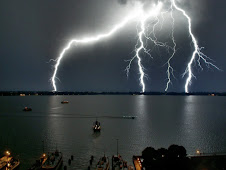How old is the Sun, it's middle-aged. It was formed about 4,500,000,000 (four and a half billion) years ago and it is expected to carry on pretty much as it is now for a few billion years yet - so no surprises in our lifetimes! What do you think about the sun? How old do you think the sun will live up to? Why?
Tuesday, June 1, 2010
June Weather
We are starting to get into the summer groove with some nicer but not exactly drier weather. We have gotten a couple of rain storms including the one on Monday May 31st. Why is it that Vancouver continues to get big rainstorms even when we are aproaching the summertime?
Hail
Hail Can be very big depending on the season and where you live. Hail is a form of solid precipitation which consists of balls or irregular lumps of ice, that are individually called hail stones. Hail stones on Earth consist mostly of water ice and measure between 5 millimetres (0.20 in) and 150 millimetres (5.9 in) in diameter, with the larger stones coming from severe thunderstorms. The METAR reporting code for hail 5 millimetres (0.20 in) or greater in diameter is GR, while smaller hailstones and graupel are coded GS. Hail is possible with most thunderstorms as it is produced by cumulonimbi (thunderclouds),[1] usually at the leading edge of a severe storm system. Hail is possible within 2 nautical miles (3.7 km) of its parent thunderstorm. Hail formation requires environments of strong, upward motion of air with the parent thunderstorm (similar to tornadoes) and lowered heights of the freezing level. Hail is most frequently formed in the interior of continents within the mid-latitudes of Earth, with hail generally confined to higher elevations within the tropics. Hail formation is most common during the summer months in the afternoon and evening hours of the day.
Unlike ice pellets, hail stones are layered and can be irregular and clumped together. Hail is composed of transparent ice or alternating layers of transparent and translucent ice at least 1 millimetre (0.039 in) thick, which are deposited upon the hail stone as it cycles through the cloud multiple times, suspended aloft by air with strong upward motion until its weight overcomes the updraft and falls to the ground. There are methods available to detect hail-producing thunderstorms using weather satellites and radar imagery. Hail stones generally fall at faster rates as they grow in size, though complicating factors such as melting, friction with air, wind, and interaction with rain and other hail stones can slow down their descent through Earth's atmosphere. Severe weather warnings are issued for hail when the stones reach a damaging size, as it can cause serious damage to man-made structures, and most commonly, farmers' crops. In the United States, the National Weather Service issues severe thunderstorm warnings for hail 1" or greater in diameter. This threshold, effective January 2010, marked an increase over the previous threshold of 3/4" hail. The change was made for two main reasons: a) public complacency and, b) recent research suggesting that damage does not occur until a hailstone reaches 1" in diameter.
After reading the above paragraph what do you think about hail now?
Tuesday, May 18, 2010
Rain on May 18, Tuesday
Yes, the streak of long lasting good weather comes to a halt as it is Tuesday and it rains. Are you relieved that some rain is falling or would you rather have the warm weather longer. What kind of weather do you prefer?
Tuesday, May 4, 2010
Different types of clouds
There are many different types of clouds that we see day to day. Although we don't usually pay attention to it but the cloud shapes are pretty amazing because they change due to different reasons such as wind, climate, and more. As you can see on the chart on the left, some clouds tend to be bigger and smaller, higher and lower, and they can also come in greater or smaller numbers. In the following link you can read up more about cloud shapes and do some trivia to test yourself, (http://eo.ucar.edu/webweather/cloud3.html)
Which types of clouds are you interested in? Do you know what clouds we usually get in Vancouver?
Subscribe to:
Comments (Atom)








